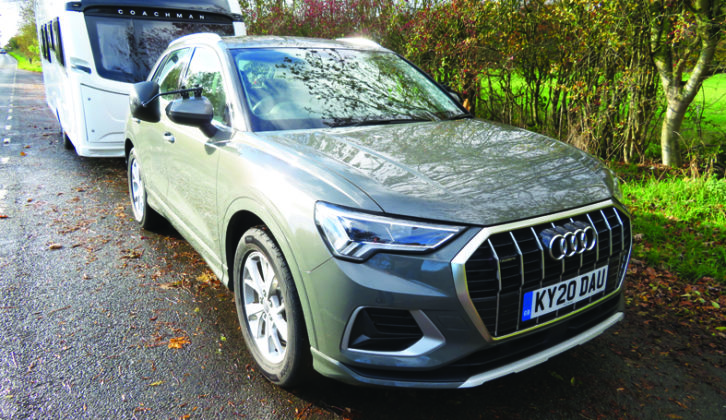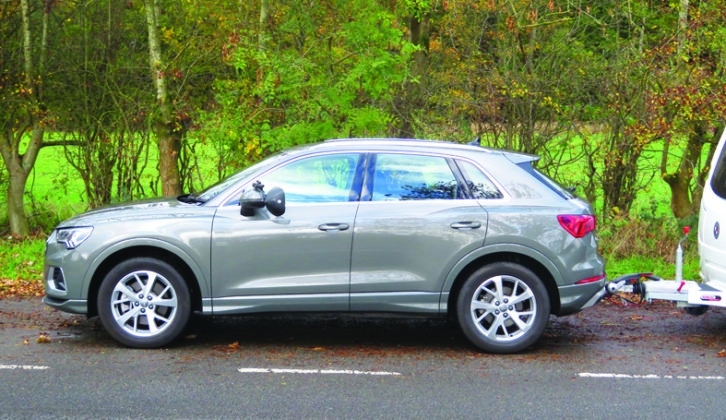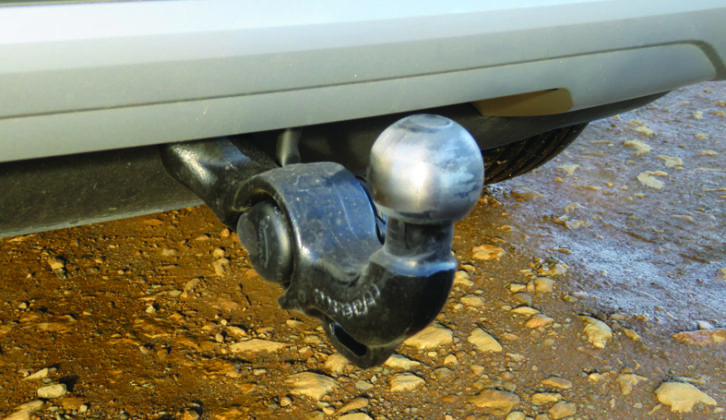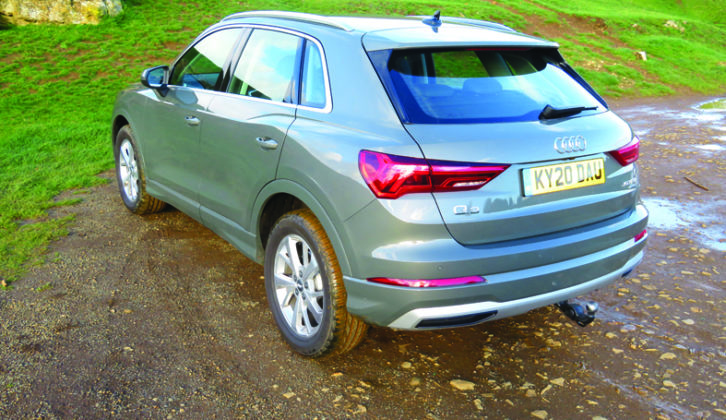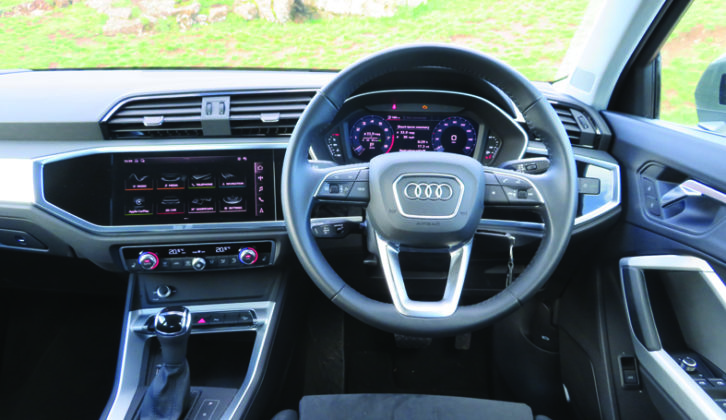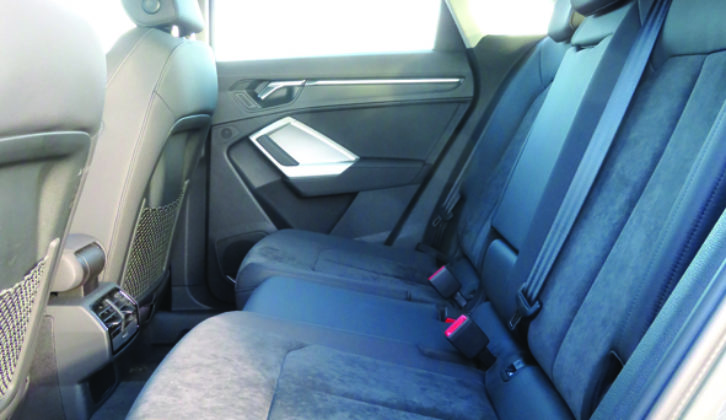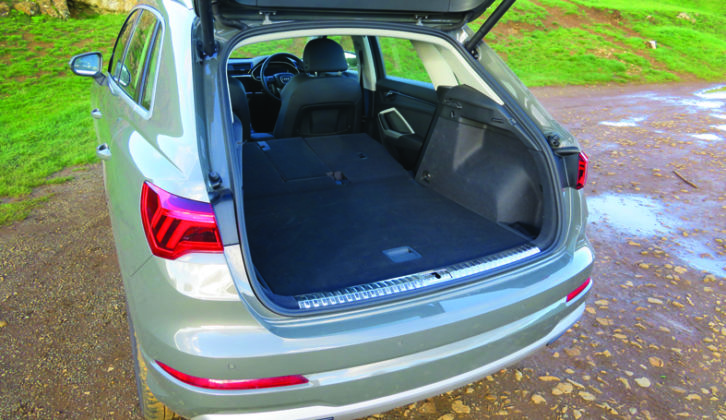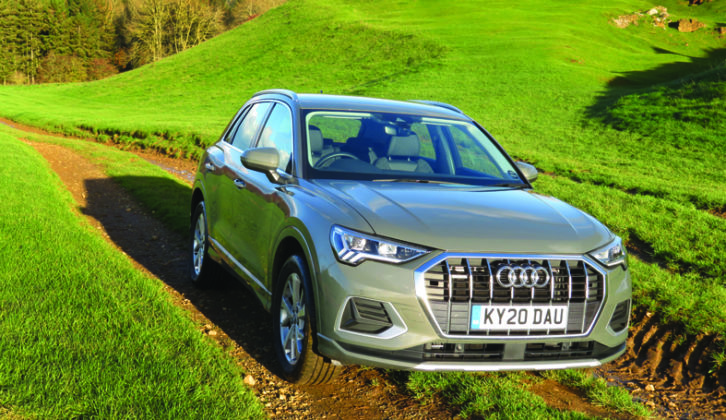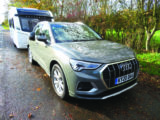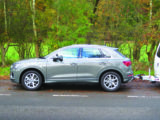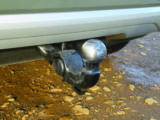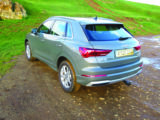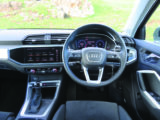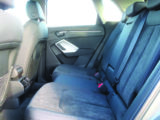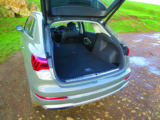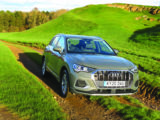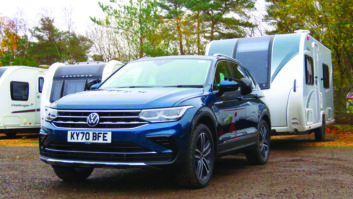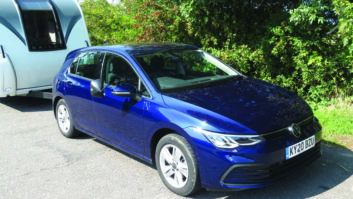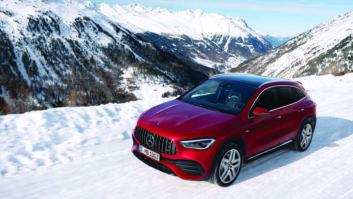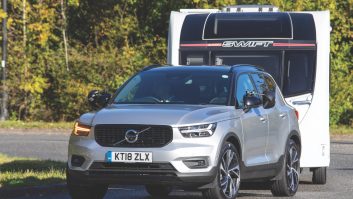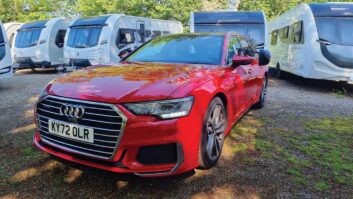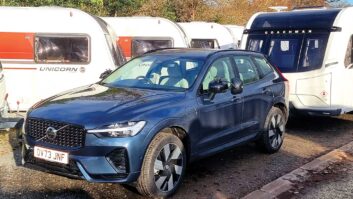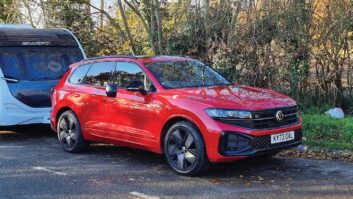Audi launched the second-generation Q3 in 2019. The German brand added a Sportback version to the line-up, with coupé-like styling, alongside the more conventional SUV Audi Q3 that we have on test.
The latest model is longer than the first Q3, as well as its key rival, the BMW X1. The increase in size promises greater space and practicality. The Q3 is also packed with technology, with a fully digital cockpit and a host of driver aids.
There are no hybrid models; instead, customers have a choice between petrol and diesel power. We’re testing the petrol-powered 40 TFSI Quattro Sport S Tronic.
What are we looking for?
Does petrol power make sense for towing, or are hybrid rivals a better alternative to diesel? Can the Audi’s powerful petrol engine return acceptable fuel economy? And is there enough substance beneath the Q3’s good looks?
Towing ability
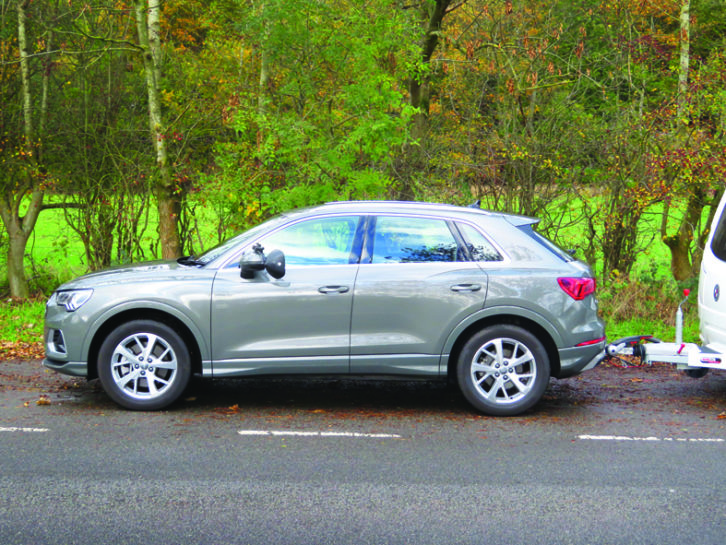
Q3 buyers have a choice of petrol and diesel engines, with outputs ranging from 148bhp to 230hp (excluding the high-performance RS Q3). Our test car’s petrol engine sits somewhere near the middle of the range.
Don’t be misled by the ’40’ in the model name – the number has nothing to do with the engine’s capacity, which is 2.0 litres, not 4.0. Nowadays in Audi-speak, the bigger the number, the greater the power. The 40 TFSI engine has 190hp.
That’s a healthy amount for a car of this size and weight. More importantly, there’s also 236lb ft of torque available from 1500-4200rpm. For a 2.0-litre turbocharged petrol, the mid-range pull is impressive.
With a kerbweight of 1695kg, the Q3 has an 85% match figure of 1441kg. We paired the Audi with a Coachman Acadia Xtra Platinum 545, with a MiRO of 1445kg.
Damp roads and breezy weather made for tricky towing conditions, but the car made a good first impression. It helps that this Q3 comes with Quattro four-wheel drive, so brisk acceleration from junctions didn’t lead to any wheelspin. The extra components needed to send power to all four wheels also contribute to the Q3’s chunky kerbweight for a car of this size.
The petrol engine pulled the Coachman up to speed quickly – there’s definitely no suggestion of feeling underpowered. It’s only when towing up and down hills that you begin to miss the extra mid-range muscle a good turbodiesel would provide. You have to use more of the throttle, more often, to maintain momentum.
It helps to shift the S Tronic gearbox from ‘Drive’ to ‘Sport’, because in this setting, the ‘box usually selects a lower gear more readily, so the engine is more responsive without needing a hefty prod of the accelerator pedal.
There’s no problem holding speed on the motorway – it’s really only hilly country roads which show the Audi’s engine in a less positive light.
Once up to speed, the Q3 feels stable, unless the wind really picks up or you overtake a large HGV. We had a couple of little wobbles when passing lorries, but nothing that would get the palms sweating.
The Audi had no trouble making a hill start on a 1-in-10 slope. The electronic parking brake held car and caravan still, and released smoothly. The Audi towed up the slope without any sign of strain.
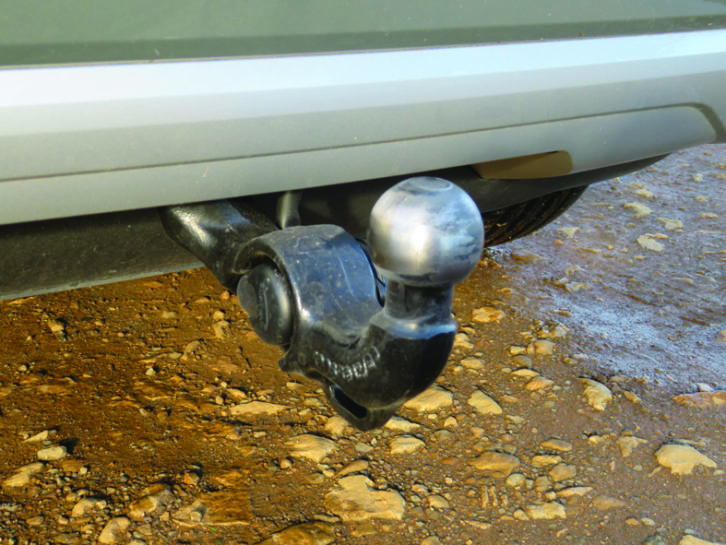
Low-speed manoeuvres proved quite straightforward. It helped that our test car was equipped with the £1195 Comfort and Sound Pack, which includes a rear-view camera as well as an uprated stereo and some additional driver aids. The camera provides you with a clear view of the towball while you’re reversing.
The towball and electrics cost £875. The ball folds out at the touch of a button, although it needs to be locked into place by hand. The electrics sit on the side of the towbar, where they can be reached easily without the back bumper getting in the way.
Solo driving
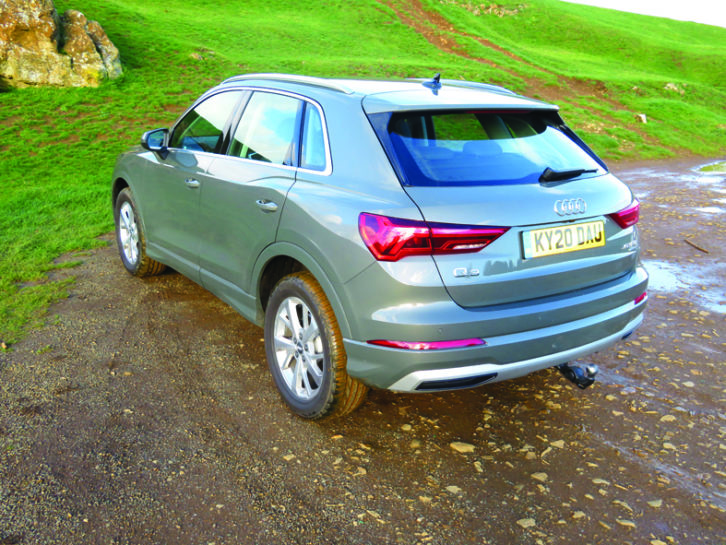
The Q3 goes toe-to-toe with some very good cars. The BMW X1 is rewarding to drive, and the XC40 is comfortable and capable. While not outstanding in any one area, the Audi Q3 can stand comparison with either vehicle.
The Drive Select system allows the driver to tailor the car’s steering, throttle and gearbox, to provide a sportier or more easy-going experience.
There’s a bit more weight to the steering and the throttle is more eager in ‘dynamic’ mode, but after a bit of experimenting, we tended to leave the system in the ‘auto’ setting. Even at its sportiest, the Q3 is competent rather than exciting.
Despite the Sport name, this model rides on standard suspension. It’s comfortable enough, but perhaps firmer than the Volvo XC40. Sharp bumps are felt with a thud.
The most expensive Q3 spec level, Vorsprung, has adaptive dampers, allowing you to tweak the suspension as you prefer.
On the motorway, there’s little noise from the engine or the wind. The only disturbance is road noise on coarse surfaces.
Without the weight of a van behind it, the Q3 40 TFSI is a quick car. The four-cylinder turbocharged engine may be cleaner and more efficient than the six-cylinder engine found in a car like this a few years ago, but it doesn’t sound as good.
Space and practicality
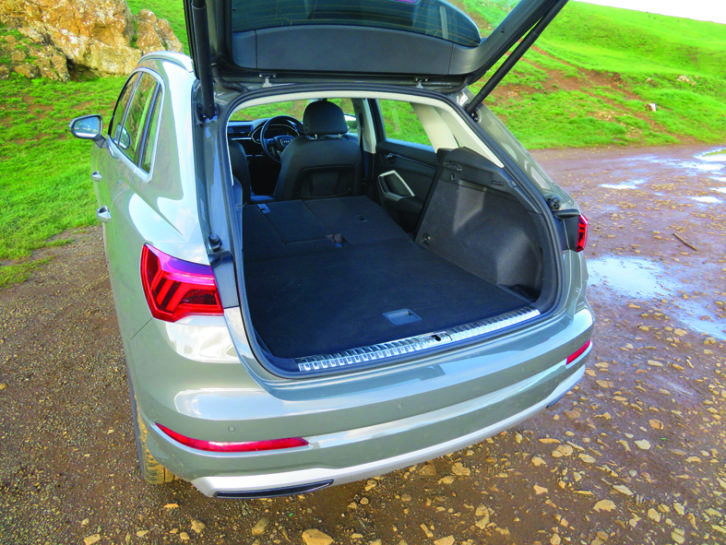
Without a prestige badge, you can buy bigger, roomier SUVs for similar money. Think of the Hyundai Santa Fe or Kia Sorento if you want a large SUV starting from below £40,000. But judged against its peers from BMW, Mercedes and Volvo, the Q3 is a practical car.
Driver and passenger have plenty of room, with a range of adjustment to the seat and wheel. But there’s no lumbar adjustment for front seats.
The cockpit is digital, with a screen in place of a speedo and rev counter. The huge, high-definition touchscreen infotainment system is rather complicated to use.
The MMI rotary selector wheel Audi systems have used for years has been pensioned off – before its time in our book. The air conditioning controls are still actual knobs and buttons, rather than their touchscreen equivalent.
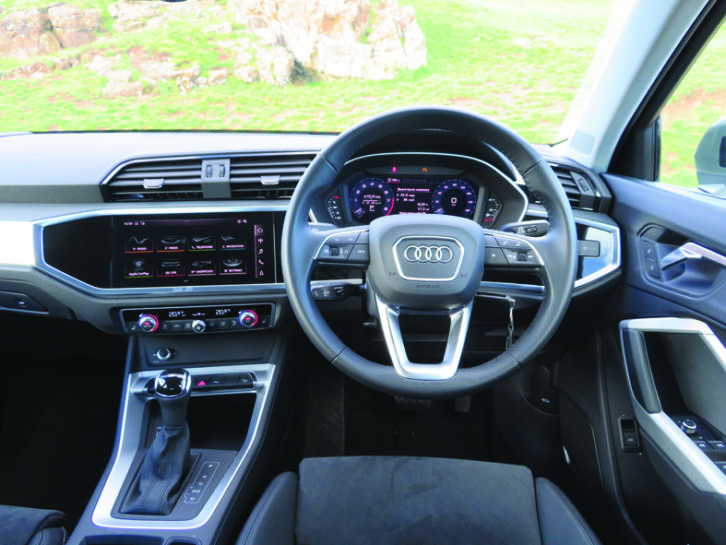
The cabin is solidly screwed together and the design is modern, but the Q3 doesn’t quite have the upmarket feel you might expect. There are too many hard, ordinary-looking plastics. It doesn’t feel as special as the larger Audi Q5 and Q7, or the Volvo XC40.
In the back, there’s enough legroom for adults who would have felt cramped in the first-generation Q3, and there are air vents between the front seats. However, we’d like to see USB ports in the back. What’s more, the relatively narrow cabin and stout transmission tunnel mean the Q3 will seat four people more comfortably than five.
The boot is a healthy size, with 530 litres for your bags. The back seats slide to juggle space, and can fold away to leave a capacity of 1525 litres.
Buying and owning
For a punchy, prestige 4×4, £37,140 is reasonable, and you can knock off more than £2000 by haggling, according to What Car?‘s research.
Sport spec is one up from the entry-level Technik, with LED headlights, 18-inch alloys, sat nav, climate control and more.
A puncture repair kit is standard, while a space-saver spare is an option. We could see no warning against towing with either in the car’s handbook.
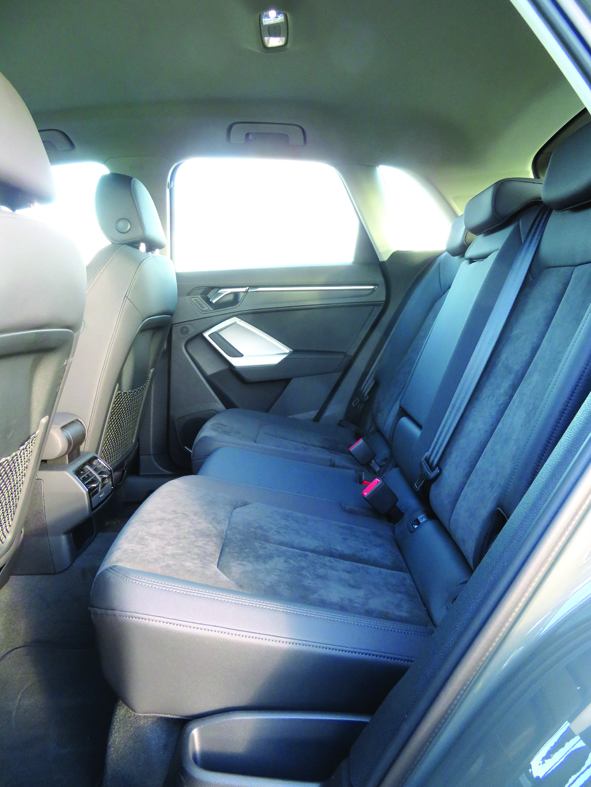
Fuel bills will be steeper than if you chose a diesel, or one of the Q3’s hybrid rivals. The car achieves just 32.5mpg on the combined cycle, and we saw 21.2mpg while towing.
The Q3 is predicted to hold its value well. You should get back 51% of the original list price after three years and 36,000 miles, What Car?‘s experts reckon.
How much will it cost on finance?
Audi Finance offers the Q3 40 TFSI Quattro Sport S Tronic for £448.65 per month over a four-year Personal Contract Purchase.
That’s based on a customer deposit of £3771.50, with Audi chipping in £3500. The contract allows for 10,000 miles per year, with excess mileage charged at nine pence per mile. The optional final payment is £14,919.30.
Verdict

The Audi Q3 is a good car, but it doesn’t have the something special that turns good into great.
With healthy power and torque outputs, a hefty kerbweight and four-wheel drive, it’s no surprise that the Q3 40 TFSI Quattro makes a strong tow car.
On hilly roads, however, the engine has to work harder than the equivalent diesel would. What’s more, the gearbox sometimes takes a little longer than it might to drop down a gear when needed.
The Q3 makes a stable tow car in most circumstances, but it can be jostled around when overtaking high-sided vehicles. That wouldn’t concern us unduly – it was windy when we tested the Audi. However, the 40 TFSI’s fuel economy would. Downing a gallon ever 21 miles or so makes the Q3 one of the thirstiest vehicles that we’ve tested in some time.
In everyday driving, the Q3 is a satisfying car to drive, although not a particularly exciting one. The ride is comfortable enough on the standard suspension and the Audi handles neatly, too, but doesn’t involve the driver the way a BMW X1 does.
Inside, the Q3 falls short of the tactile appeal we’ve come to expect from Audi. But there’s reasonable rear-seat space – you couldn’t say that of the original Q3 – and the boot swallows at least as many bags as its rivals.
If you must tow with a petrol-powered vehicle, this Q3 40 TFSI does the job well. But the best diesels and plug-in hybrids will be a lot less thirsty.
See what we make of buying a used Audi Q3 too – we think it looks the part, although the build quality could be better.
If you liked this… READ THESE:
Six of the best luxury SUV towcars
If you’ve enjoyed reading this article, why not get the latest news, reviews and features delivered direct to your door or inbox every month. Take advantage of our brilliant Practical Caravan magazine SUBSCRIBERS’ OFFER and SIGN UP TO OUR NEWSLETTER for regular weekly updates on all things caravan related.
This Q3 comes with Quattro four-wheel drive, so brisk acceleration from junctions didn't lead to any wheelspin
Technical Specifications
| Engine Size | 1984 cc |
| Kerbweight | 1695 kg |
| 85% KW | 1441 kg |
| Towball Limit | 90 kg |
| Maximum Towing Limit | 2100 kg |
| Power | 190 bhp |
| Torque | 236 lb ft |
| Offical MPG | 32.5 mpg |
| Towing MPG | 21.9 mpg |
| CO₂ | 198 g/km |
